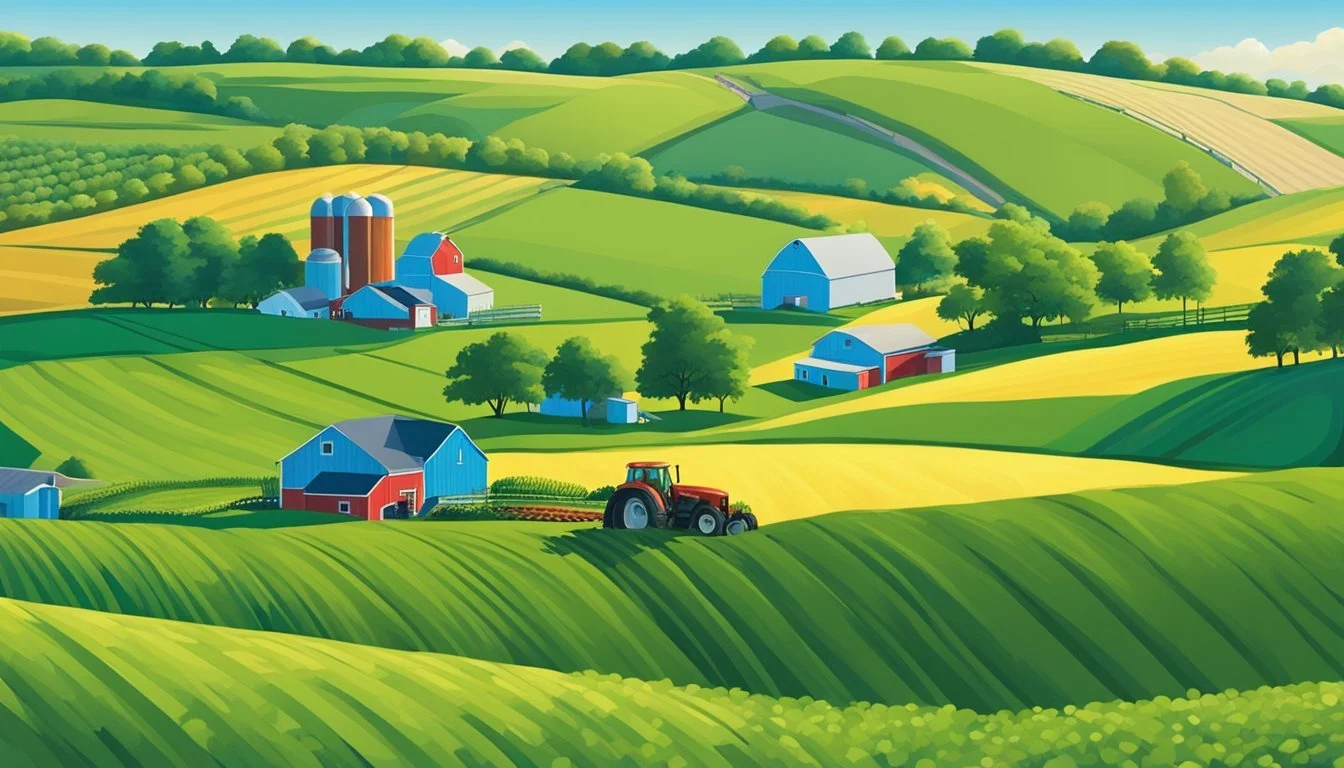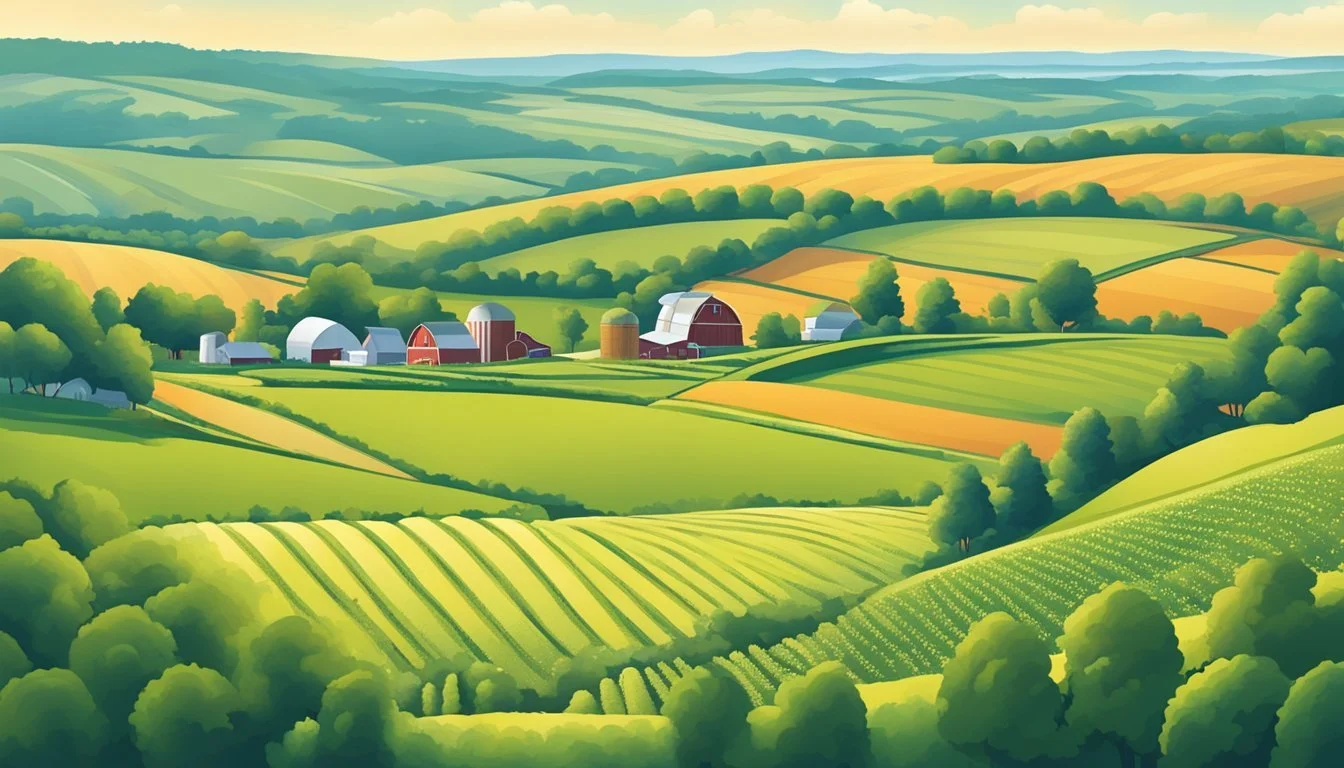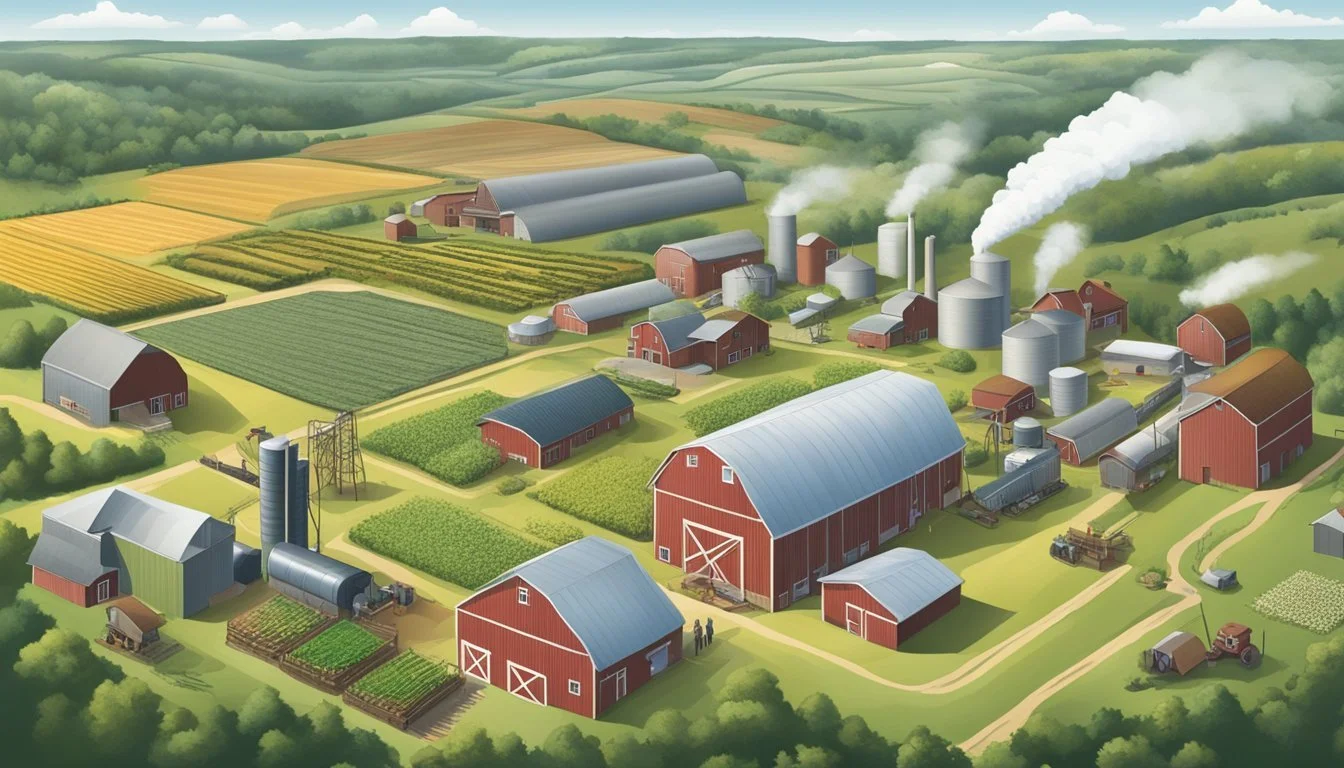Farming Communities in New Jersey
Thriving Agricultural Hubs
New Jersey's farming communities showcase a remarkable blend of tradition and innovation, offering a window into the area's rich agricultural heritage. Despite being one of the most densely populated states in the U.S., New Jersey is home to a variety of farms and ranches, encompassing everything from small family-operated plots to large commercial enterprises. With over 3,000 acres of farmland currently available for sale, it's evident that agriculture remains a vital part of the state's economy and culture.
These communities not only provide fresh, locally grown produce but also support sustainable farming practices that benefit both the environment and local ecosystems. The diverse agricultural landscape includes tillable farming ground, large cattle pastures, and arable land, reflecting the adaptability and resilience of New Jersey's farmers. This variety ensures that the state's farming sector remains dynamic and capable of meeting the needs of its residents.
Moreover, the economic impact of farming in New Jersey is significant, with farmland worth millions of dollars contributing to the local and statewide markets. Properties are available in various sizes and price ranges, making it feasible for new farmers to join the industry or for established farmers to expand their operations. These communities play a crucial role in preserving New Jersey's agricultural traditions while driving forward modernization and growth in the sector.
Historical Background
Farming communities in New Jersey, especially Jewish ones, have roots that trace back to the late 19th and early 20th centuries. These communities were influenced heavily by immigration waves and supported by various philanthropists and organizations.
Immigration and Settlement
In the late 19th century, many Jewish immigrants from Eastern Europe and Russia sought new opportunities in the United States. Seeking refuge from persecution and economic hardship, they arrived through ports like Castle Garden. Settling in New Jersey, these immigrants established farming colonies, including notable ones like Alliance, Vineland, and Woodbine.
Institutions like the Baron De Hirsch Fund played a critical role in supporting these settlers. These immigrants aimed to create self-sustaining agricultural communities, blending traditional farming techniques with their cultural heritage.
Development of Jewish Farming Communities
Jewish farming communities thrived in southern New Jersey. Establishments such as the Alliance Colony became focal points for agricultural and communal life. The Jewish Agricultural Society, founded in New York in 1900, supported these endeavors, promoting farming as a viable occupation for Jewish immigrants.
During this period, these communities focused on creating homogenous colonies. Families from similar Eastern European backgrounds worked together, fostering strong, cohesive societies. This development laid the groundwork for future generations and bolstered the local economy.
Influence of Philanthropists and Organizations
Philanthropists and organizations significantly influenced the formation and sustainability of these farming communities. Baron Maurice de Hirsch, a German Jewish philanthropist, was a pivotal figure. His Baron De Hirsch Fund provided essential financial support and resources, encouraging the purchase and cultivation of farmland.
Organizations like the Hebrew Immigrant Aid Society and the Alliance Israelite Universelle also played crucial roles, offering assistance to immigrants and ensuring their successful resettlement. These benefactors helped establish a robust network of Jewish farming communities, which continued to evolve and grow through the early 20th century and beyond.
Geographic and Demographic Analysis
Farming communities in New Jersey are diverse, shaped by the state's varied landscapes and rich cultural heritage. The distribution spans urban, suburban, and rural areas with distinct community practices and cultural affiliations.
Distribution Across New Jersey
New Jersey's farming communities are spread across the state, from the urban fringes of the Metropolitan Areas to the rural expanses of the Pine Barrens and Southern New Jersey. In the Garden State, Central New Jersey and South Jersey are key agricultural zones, each with unique crop production and farming practices.
Southern New Jersey features extensive farmlands and is known for producing blueberries, cranberries, and peaches. This area contrasts with the smaller farms around Central New Jersey, where direct marketing through farm markets and pick-your-own operations are common.
Northern New Jersey has fewer farms, but urban agriculture is present, including community gardens and rooftop farms. The geographical diversity supports a wide range of produce, from fruits and vegetables to livestock.
Community and Culture
New Jersey's farming communities are culturally rich, influenced by the state’s Jewish and Yiddish heritage. Particularly around Central New Jersey, evidence of its Jewish History is seen in agricultural practices and community-based events.
The American Story of immigration is reflected in the Community and cultural practices of these farming areas. Multi-generational farms are common, reflecting traditional practices while also adapting modern techniques.
In South Jersey, the culture includes vibrant local markets and festivals celebrating harvests. The farming community’s resilience and adaptability stand out, important traits for navigating agricultural challenges. New Jersey's status as a crucial agricultural state in North America significantly contributes to preserving its diverse cultural and farming heritage.
Economic Impact and Industrial Growth
New Jersey's farming communities play a crucial role in the state's economy, contributing significantly through diverse agricultural practices and expanding market opportunities. Analyzing these aspects reveals the ways in which local agriculture sustains growth and stability.
Agricultural Practices and Crops
New Jersey agriculture generates substantial economic impact, amounting to $2.1 billion and supporting over 31,231 jobs. The state's agriculture sector includes nursery and greenhouse production, which are among the largest contributors.
Family farms are central to fostering crop diversity, with berries, poultry farming, and egg production being notable areas. Education and support from local institutions ensure that these practices evolve efficiently.
Local farmers embrace sustainable practices, enhancing productivity and supporting the community's well-being. These efforts underscore New Jersey's commitment to high-quality produce and sustainable agriculture.
Expansion of Markets and Industries
New Jersey farmers tap into lucrative markets like Philadelphia and New York City. These opportunities enable wider distribution of products such as eggs and berries. The presence of robust transport links supports this expansion.
The multiplier effects from agricultural activities result in increased re-spending within local economies, thereby adding value. Farmers' markets and partnerships with local industries further drive growth.
Strategic initiatives and collaborations between agricultural entities strengthen the market presence of New Jersey's farm produce. This dynamic interplay fosters a resilient and diversified agricultural industry, ensuring sustained economic vitality.
Cultural Heritage and Preservation
Cultural heritage in New Jersey's farming communities encompasses religious institutions and digital preservation efforts. It recognizes the importance of synagogues and archives in maintaining the historical and cultural fabric of these areas.
Synagogues and Religious Institutions
Synagogues have been central to the Jewish farming communities in New Jersey. The Alliance Heritage Center at Stockton University highlights these efforts. Founded in 1882, South Jersey's Alliance colony included the first synagogue built by Jewish farmers in America.
Religious institutions, such as synagogues, have helped maintain cultural traditions and fostered a sense of community. The Elizabeth and Samuel Levin Alliance Heritage Center Director emphasizes these institutions' significance in documenting Jewish agricultural history. Artifacts from these locations provide tangible links to the past, helping preserve the community's rich heritage.
Archives and Digital Presence
Archival efforts, such as those at Rutgers University, play a critical role in preserving the history of New Jersey's farming communities. Virtual exhibits and digital museums offer access to these important documents and artifacts. Oral history interviews with community members capture personal narratives that enrich the historical record.
The Alliance Heritage Center contributes through a mix of traditional and digital archives. These resources document the social, economic, and cultural experiences of Jewish farming communities. By subsidizing such efforts, New Jersey ensures the documentary heritage remains accessible to future generations. These initiatives enable a broader audience to engage with and learn from the state's agricultural and cultural history.
Contemporary Farming Communities
Contemporary farming communities in New Jersey face unique challenges and opportunities, driven by shifts in demographics and technological advancements.
Modern Challenges and Opportunities
New Jersey's farming industry operates in a climate that increasingly demands sustainability. Vertical farms, such as AeroFarms in Newark, highlight this trend by using less water and space. Technological innovation plays a crucial role, aiding farmers in maximizing yield while minimizing environmental impact.
Climate change affects crop viability, pushing farmers to adopt new methods. Economic pressures demand that farms stay profitable despite urban competition for land. Community support and government programs provide essential resources for modern farmers navigating these complexities.
Demographic Changes and Assimilation
Demographic shifts in New Jersey's farming communities are notable. There's an influx of new farmers through initiatives like the "Next Gen" Farmer Program. These programs help assimilate displaced persons and young people into farming, ensuring industry continuity.
Immigrant communities contribute significantly, bringing diverse agricultural practices and enriching the local economy. New farming models, supported by initiatives at places like the Muckshaw Preserve, demonstrate successful assimilation and community growth in rural areas.
Evolving Role in the New Jersey Landscape
Farming in New Jersey is adapting to modern challenges and opportunities, particularly through integration with urban areas and the adoption of sustainable practices. These changes are vital for maintaining agricultural productivity and community engagement.
Transition to Urban Proximity
New Jersey's farming communities, including those in Farmingdale and Lakewood, are shifting towards urban proximity. Traditional large farms are increasingly replaced by smaller operations closer to metropolitan areas.
This trend helps supply fresh produce to city dwellers, who may have limited access to fresh foods. Vertical farms like Greens Do Good provide innovative solutions. They optimize space, allowing year-round production regardless of outdoor conditions.
Incorporation of farms into urban settings also benefits lower-income areas. Access to fresh produce is improved, enhancing community health. This ensures abandoned farms are revitalized, rather than left unused.
Sustainable Practices and Future Directions
Sustainable practices are key to New Jersey's evolving farming landscape, especially as climate change influences agriculture. With average temperatures rising and extreme weather becoming more common, farmers must adapt.
Efforts in places like Millville and Salem County include precision agriculture and organic farming. These methods minimize environmental impact and preserve resources. Farmers use technology to optimize water usage, reduce pesticide reliance, and improve yield efficiency.
Farmland preservation remains a priority. Protecting the remaining 850,000 acres is crucial for long-term agricultural viability. New initiatives focus on enhancing soil health and biodiversity, ensuring these lands can continue to support future generations.
New Jersey’s agricultural future looks promising as it balances proximity to urban areas with sustainable, innovative practices.








